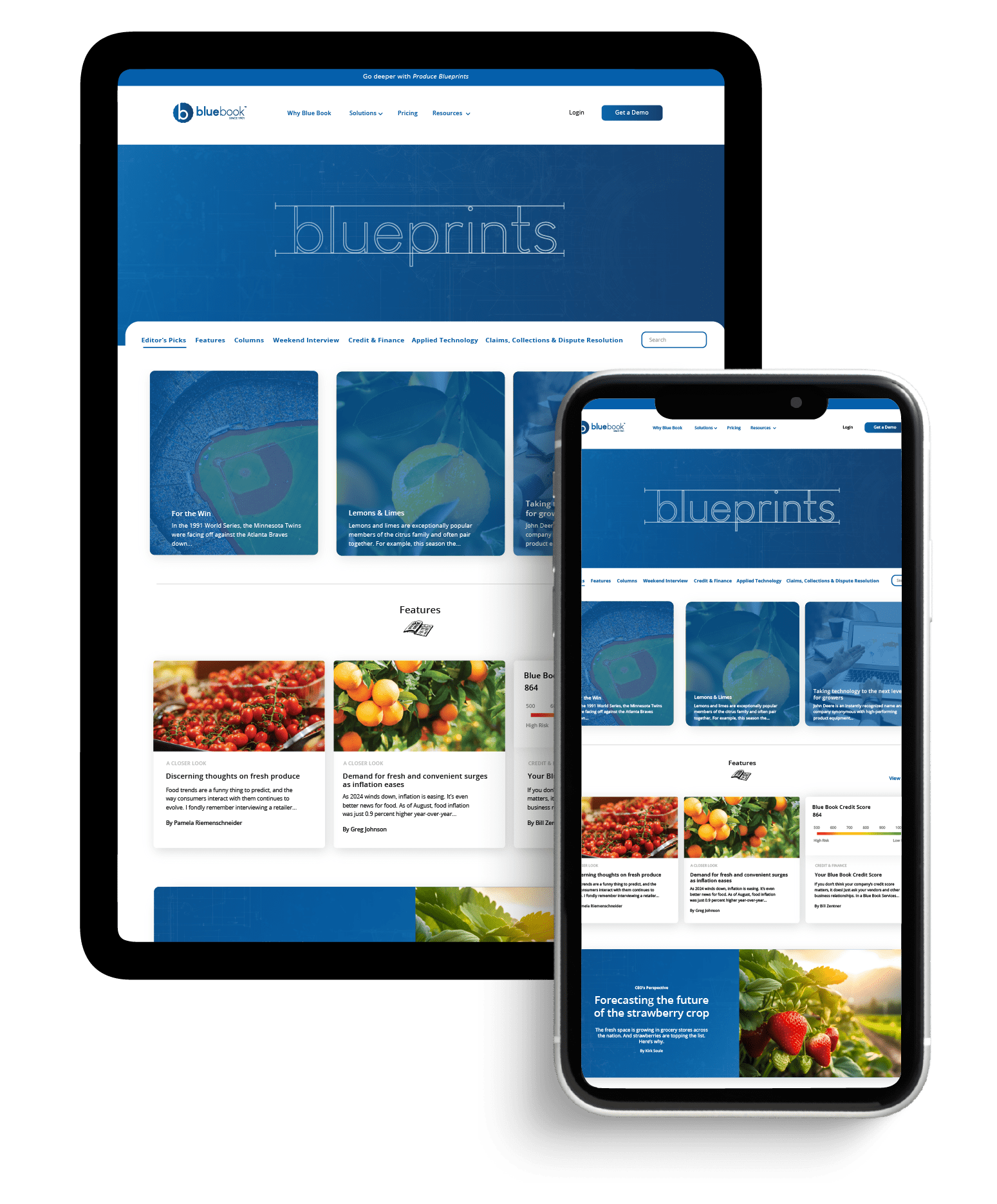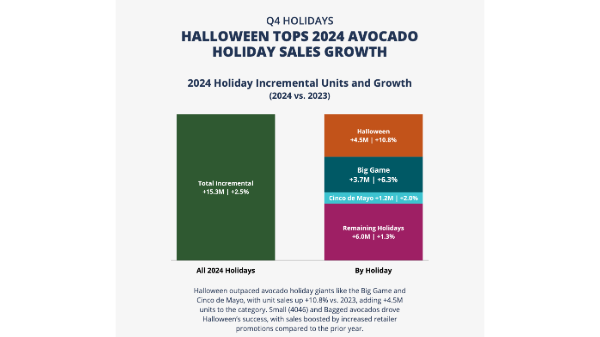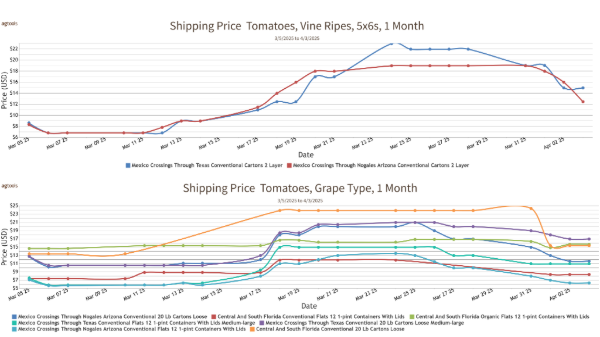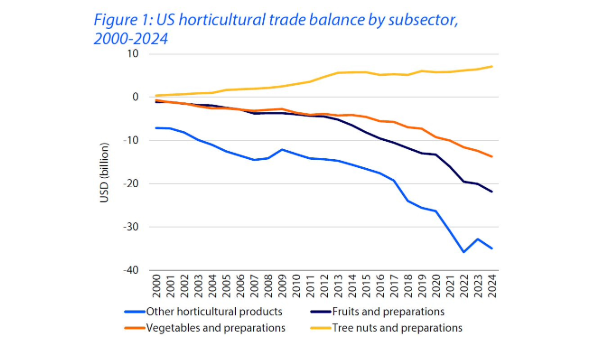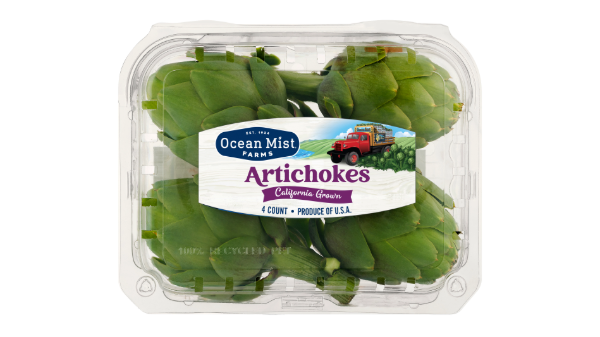Welcome to Blue Book!
Are you ready to join the thousands of companies who rely on Blue Book to drive smarter decisions? View our plans and get started today!
Still have questions? We’d love to show you what Blue Book can do for you. Drop us a line– we’ve been waiting for you.

Executives in all segments of fresh produce continue to grapple with changes in the industry, including more frequent extreme weather events, high prices impacting suppliers and consumers, an evolving labor pool, and the integration of artificial intelligence, among other trends. Here’s what they’re thinking at the start of 2025 and a look at the months ahead.
Inflation and the Economy
Many economic indicators improved in 2024. Inflation moderated, but high consumer prices, especially for food, and supplier costs, especially in labor, are ongoing issues for growers, retailers, and foodservice.
“Consumers are still concerned about food inflation, and it’s a challenge to sales overall but also to the ability of retailers to pay growers an adequate return for their product,” explains Tom Stenzel, principal at the Stenzel Group in Alexandria, VA and executive director of the Controlled Environment Agriculture (CEA) Alliance.
Jim Roberts, president of sales for Naturipe Farms, LLC BB #:116078 in Salinas, CA, agrees.
“Our main goal is ensuring our growers remain profitable on their crops, as much as possible, so they can reinvest in their farms,” he says. “Rising costs since the pandemic have increasingly had an adverse trickle-down effect that has to be offset with cost of goods.”
Zak Laffite, president of Wonderful Citrus BB #:115157 in Delano, CA, explains that margins during inflationary periods are compressed by both rising grower costs and decreased consumer sales. In fresh vegetables, high prices cause consumers turn to frozen products instead, while fruits lose sales to processed and shelf-stable options. “It’s about the price, but also about trying to reduce spoilage and waste.”
Produce retains a reputation for being expensive, even though the data does not necessarily bear this out.
“You have to acknowledge that for people with affordability issues who are trying to stretch their food dollars calorically, produce will be a challenge,” confirms Mollie Van Lieu, vice president for nutrition and health at the Newark, DE-based International Fresh Produce Association BB #:378962.
But there are also opportunities. “People with more wriggle room can see the value in fresh produce—they’re increasing consumption of plants and reducing consumption of meat for health or cost reasons.”
Concerns on price gouging
“There’s a general sentiment that grocery prices are high—and that they’re too high,” contends Daniel Scheitrum, assistant professor of agribusiness at California Polytechnic State University (Cal Poly) in San Luis Obispo, CA.
Kevin Brooks, chief revenue and marketing officer for Procurant BB #:355257 in Watsonville, CA, concurs. “The past few years have seen pricing and demand revert back to more normal, prepandemic patterns, but there remains an issue with unit volume being lower while pricing still carries inflationary lift.”
Some retailers are taking it upon themselves to lower prices. Giant Eagle, for example, announced a 20 percent average price reduction on more than 200 produce items in both its Giant Eagle and Market District banners, representing a savings of $25 million.
The federal government is also taking a closer look high food prices. Stop & Shop, for example, received a letter in October 2024 from four U.S. Senators and Representatives asking for information on pricing discrepancies between its locations in Massachusetts, after a Hyde Square Task Force study found prices were 18 percent higher in minority-dominated working class Jamaica Plain than the more affluent suburb of Dedham.
There’s also talk of price gouging legislation to deal with high grocery prices, although there are doubts about the effectiveness. “I don’t believe price gouging is behind the higher prices,” observes Scheitrum, pointing instead to factors such as transportation issues, conflicts around the world leading to problems securing inputs like fertilizer, and high labor costs, especially in California.
This is an excerpt from the cover story of the January/February 2025 issue of Produce Blueprints magazine. To read the whole issue, click here: https://www.bluebookservices.com#january-february-2025-produce-blueprints/1/


